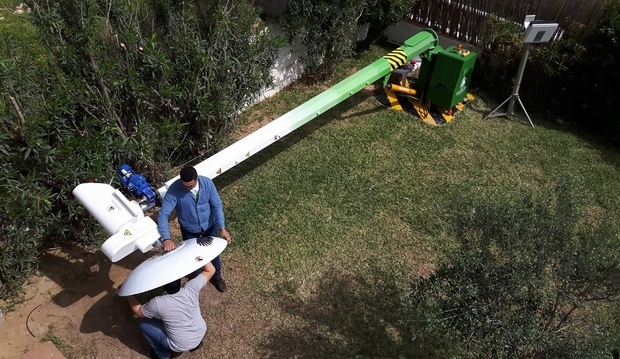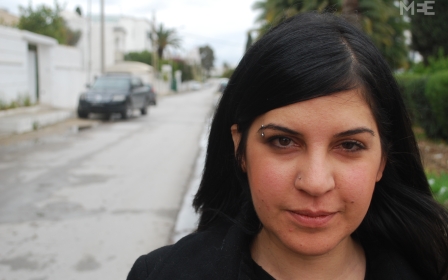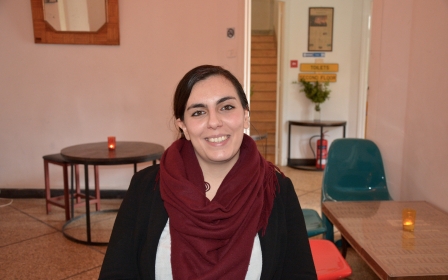Tunisia: A wind revolution is blowing on sustainable energy

TUNIS – “This is a major technological improvement that is as revolutionary as the invention of the wheel,” said one of the guests during the launching ceremony of the "Saphonian" machine industrial prototype. On 8 April, in Raoued on the outskirts of Tunis, no wind is blowing. It does reach a speed beyond 1.5 metres per second, but it needs to reach 2 metres per second in order to start the machine.
However, a few gusts of wind are more than enough to make the crowd understand how this unusual machine works. Anis Aouini, the inventor of the Saphonian, explains to the audience: “The surface elements are not running the same way as a regular blade is, but they run in a nature-inspired movement, which I have called ‘a tri-dimensional nodal movement’. It is similar to a roller-coaster movement in space. This is a common movement in nature. It is the same movement that allows fish to move forward with their tails and birds to fly."
This 38-year-old inventor wishes to see the Saphonian machine competing against the wind turbine or even better - dethroning it. The first results are encouraging. According to Aouini, if we compare same size prototypes of the two machines, the Saphonian is less expensive to produce and 70 percent more efficient.
In 2014, Microsoft signed a strategic alliance with Saphon Energy, the Tunisian start-up behind the project. The aim is to develop the power of the machine, adding to it Microsoft technology in order to remotely control several Saphonian machines.
According to Layla Sarhan, Microsoft representative in the Middle East and North Africa region, by investing in new green energy, Microsoft is simply following its company policy, looking to get a long-term return on investment. “The more the project is going to grow, the more machines there will be to connect, and the more the Microsoft cloud is going to be used,” she explains to Middle East Eye.
That first prototype of 1KW was launched officially after five years of research and development. This stage was mainly financed by a couple of business angels who believed in the project: Pakistani Khaled Qoraichi and Algerian Ihsan Khalaf.
However, if this invention wants to conquer the sustainable energies marketplace, it needs to be scalable, meaning that the functionalities and the performances of the machine need to remain the same while it gets bigger in size and in power.
It will be, however, a long journey. A contract has just been signed with an Indian infrastructures investment bank in order to produce 50 Saphonian machines of 20KW by early 2018 and to set up in India the first pilot field of the machines with power output of 1MW. According to Aouini, this technological showcase will allow field condition tests and bring up the machines progressively to a 1MW power output each.
Carthaginian and Tunisian
“Since its invention by Edison, it is the very first time that a lightbulb is being powered by a non-Western technology,” Hassine Labaied, co-founder of Saphon Energy, says proudly. The invention is Tunisian and has a 95 percent level of technological integration, which means that the production is local and only depends on few imported pieces.
The Saphonian machine has won several innovation prizes. The Gulfstream Navigator Award is the latest one. This prize that rewards the most promising inventions of the year may not ring a bell to the neophytes, however, international investors do have their eyes on the laureates. The Tunisian invention overtook the nine American competitors also in the race.
In 2012, Hassine left a 12-year career as director of City Bank to found, with his childhood best friend Anis Aouini, Saphon Energy. A crazy wager perhaps, but beyond this project, there are two friends who share the same dream rooted in the ancient history of Tunisia. For them, it was not only about launching a start-up business, but they wanted to “give back to the land of Carthage, Tunisia, its past glory through innovation and technology,” says Aouini to MEE.
Despite a promising and already successful career, Aouini has never been attracted by the siren songs of the Silicon Valley or its Indian equivalent, Bangalore. He completed his studies in Tunisia, and after a career in oil and gas companies, carries on setting up new projects in his country despite all the difficulties he has faced.
Indeed, it has not been an easy road. At the very beginning, to test the first prototypes, they needed the Borj Cedria technology which has the necessary infrastructure, but that was located 20km away and the prices were too high. There are few means available to support the research and development sector in Tunisia. The Saphon Energy team had to build up by itself a wind tunnel dedicated to the testing stage.
Aouini says that there were other obstacles, such as administrative paperwork and delays and detention of electrical components at customs.
Despite all of this, the whole team stood firm. For Aouini, the battle of the Saphonian machine against the wind turbine is like “the battle of Saphon, Carthaginian god of wind, who gave its name to the machine, against Aeolus, the Greco-Roman god of wind. The revenge of Carthage over Rome.”
Inspired by Hannibal
The headquarters of Saphon Energy are located in the former Punic City, in the residential suburb of Tunis. On Aouini’s desk there is a statue of Queen Didon, a bust of General Hannibal and a replica of a Hepteres, a very famous Carthaginian ship. A huge and impressive mural of the Punic harbour is facing it.
With great passion, Aouini tells us about Hannibal, one of his main sources of inspiration. “Hannibal used to say either you find a way or you make a way. He couldn’t engage in a sea-fight against Rome, therefore, he crossed the Alps. Even though everybody thought it was impossible.”
Like his idol, Aouini worked with his imagination. “A wind turbine output is limited by a physics law, Betz’s Law - which says that in theory, a wind turbine cannot convert more than 59 percent of the wind power. I had a problem with that, I couldn’t get why there was a limitation and we couldn’t go further’.”
While smoking his cigarette, he thinks back to when he first had the idea of the Saphonian machine. “In order to find the answer, I had to think outside the box, no more commonplaces, same way Hannibal did.” The result is a wind converter into electric energy, but with no blades or rotating movement that run conventional wind machines, which makes the Saphonian machine bird-friendly and does not interfere with radar and telecommunication waves.
As a father of a young girl, Aouini is not just an engineer. Passionate about Arabic literature and music, he writes poems and composes songs he sings with his team, whose average age is 28-years-old, as a way to relieve the pressure. This is a big challenge for him, for Hassine his fellow partner, and for the whole team that has joined the adventure.
The Indian pilot of his Saphonian machines and the potential for developing the prototypes into larger machines will tell whether Aouini can win his very own 21st century battle of Saphon against the gods of wind.
Translated from French (original) by Nassima Demiche.
Middle East Eye propose une couverture et une analyse indépendantes et incomparables du Moyen-Orient, de l’Afrique du Nord et d’autres régions du monde. Pour en savoir plus sur la reprise de ce contenu et les frais qui s’appliquent, veuillez remplir ce formulaire [en anglais]. Pour en savoir plus sur MEE, cliquez ici [en anglais].





